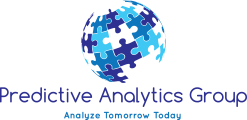Credit scores only tell part of a borrower’s story. Lenders who dig deeper find reliable borrowers in unexpected places. The numbers back this up – when one regional fintech we worked with added new types of data to their analysis, they cut losses by 28% while approving 7% more applicants.
Better Data Makes Better Decisions
While credit bureau data sets the baseline, new data sources show patterns that credit scores miss. Instead of focusing only on credit history, lenders now look at how potential borrowers manage their daily finances.
Alternative data analysis might include such non-traditional data points as education and employment history, utility bill payments and rent payment history, social media activity and digital footprint analysis, and mobile phone usage patterns.
Old-school risk assessments often pass over good borrowers. New methods catch these oversights. Take reject-inference models – these tools show lenders which declined applicants might have succeeded if approved.
When lenders look at rent payments, phone bills, and other regular expenses, they often spot strong candidates others miss. One lender found that applicants who kept their rental records and phone records up to date paid back loans more reliably than their credit scores predicted.
Getting Results
Success starts with knowing your true costs. Lenders must understand everything from marketing expenses to likely losses before setting rates. PAG helps clients understand their cost to acquire and their financial curves to help set the ultimate loss thresholds that will drive their risk appetite.
Next comes picking your borrowers carefully. Products need to match specific customer needs or you’ll attract the wrong applicants. The value proposition of the credit offering must align to the objectives of your desired customers and your risk appetite. For example, does the customer value debt consolidation, rewards programs, or affinity relationship. Testing proves what works – lenders track results at each risk level and adjust based on actual performance.
Old School, Meet New Tools
Risk managers who’ve seen multiple economic ups and downs know what to watch for. They can tell short-term problems from serious risks. When they pair this knowledge with new tools like joint odds matrices — where lenders can evaluate multiple risk factors simultaneously — and tree logic, where lenders can visualize decision pathways clearly and track multiple possible outcomes, they spot opportunities others miss.
Machine learning adds precision to these insights, but it works best with experienced oversight, delivering improved accuracy, risk assessment enhancement. In these cases, machine learning systems handle initial screening and standard cases and flag complex loan products or borderline cases to be reviewed by human experts, who can verify data is auditable, ensure no reinforcement of biases occur, and fine-tune parameters based on model performance.
This hybrid approach ensures that while machine learning handles the heavy lifting of data processing and pattern recognition, experienced underwriters maintain strategic oversight and handle nuanced decisions.
The proof shows in the results. Lenders using these methods to improve their selections with credit bands to ensure adverse selection does not creep into the lending decision. This will lead to loss rates often coming in as much as 20% lower than the predicted score band would indicate by itself. Best of all, they’re helping qualified borrowers who used to get overlooked.
David LaRoche is managing partner of U.S. Operations for Predictive Analytics Group. You can follow us on LinkedIn here. Reach out if you would like to discuss finding reliable borrowers in unexpected places.





